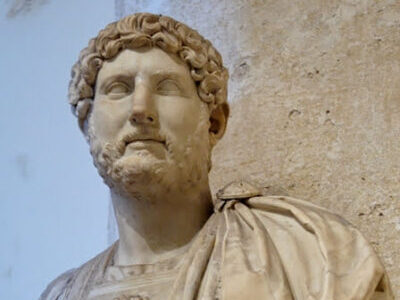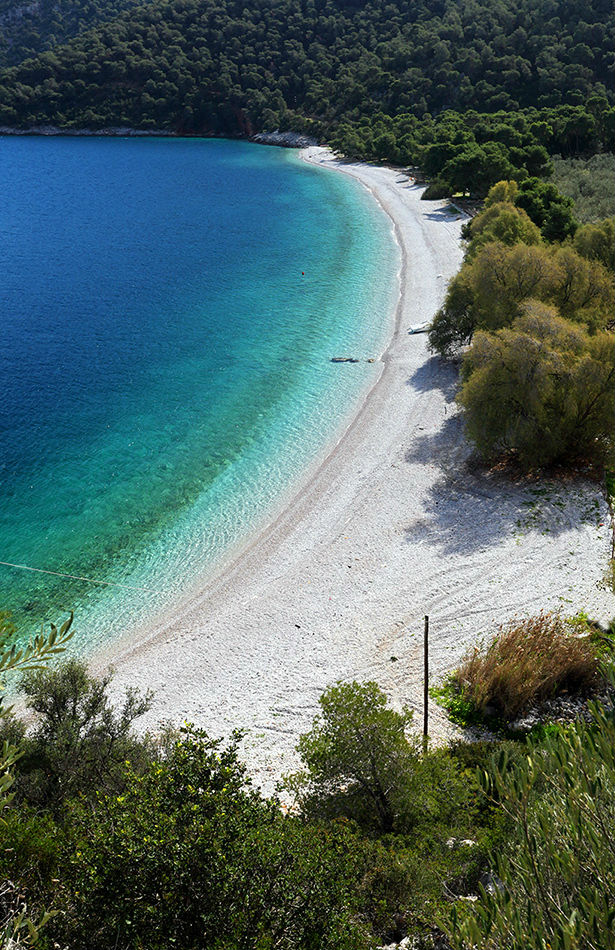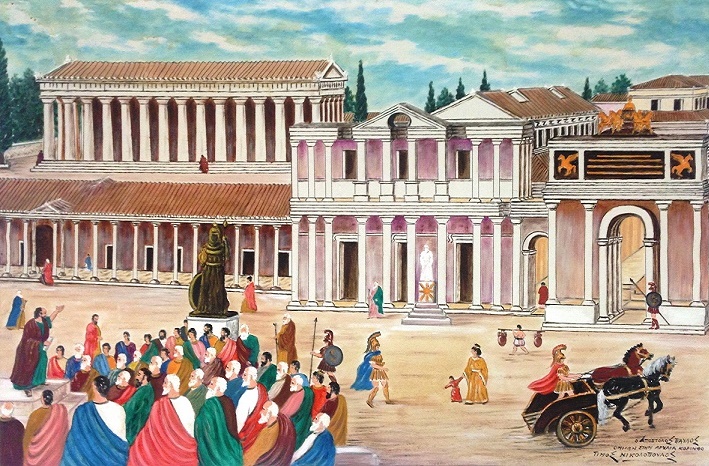
Roman Times
The confrontation of the Confederacy with Rome led in 146 BC. in the famous battle of Lefkopetra, in the area of the Isthmus, where the Greek troops were crushed by the Roman legions under Lefkios Mommios. According to Greek and Roman writers, the military defeat was followed by the complete destruction and desolation of the city.
About a hundred years later, in 44 BC, the lifelong dictator of Rome, Julius Caesar, decided to re-establish Corinth as a Roman colony, recognizing its special geographical importance in its broader strategy for the eastern Mediterranean. His violent death in the same year did not thwart his ambitious plan, as it was continued by his successor Octavian, later Augustus. The new city was named Colonia Laus Iulia Corinthiensis or Clara Laus Iulia Corinthus or Iulia Corinthus Augusta, as a colony of the Julia family of Caesar and Augustus, and was designated in 27 BC. capital of the Roman Province of Achaia (Provincia Achaiae), which included much of mainland Greece, the Peloponnese and several islands.
Due to its desolation after the battle of Lefkopetra, the city was initially colonized by free Romans and veteran soldiers, who were soon surrounded by Greeks, who took advantage of the particularly fertile land confiscated by Rome (ager publicus) and ceded to newcomers.
Very soon the population of the city increased significantly, as agriculture, livestock and trade re-developed, with corresponding exports of wool, dyed woolen fabrics, olive oil and honey, but also wood and metal objects. On the other hand, the needs and habits of the Roman inhabitants of the new city, as well as its international role, led to the import of goods from other parts of the Empire, such as wine and building materials (marble, granite), which were necessary for the new , luxury constructions.
According to the researchers, the city was redesigned with a hippodame system, ie with vertical and horizontal roads that demarcated urban islands. Beautiful public buildings and private monuments to wealthy Romans and Greeks were erected around the Agora. Evidence for the construction of the buildings can be found in many inscriptions, while their depictions are mainly in later local coins. The phrases of Oratius “non cuivis homini contingit adire Corinthum / non licet omnibus adire Corinthum” (Epistles 1.17.36) and of Strabo “all men in Corinth are in the sea” strong> (Geographical 8.6.20) reflect the prosperity of the city and the high cost of living there.
Around the middle of the 1st century AD, when the Apostle Paul visited it, Corinth was now an important Roman city of the Empire, ruled by two local lords, the duoviri, in the standards of the consuls of Rome, a miniature of the capital which was a reference point in the thought and journey of the Romans to the East.
The Philhellene Roman Emperor Hadrian was emperor of the Roman world during the years 117 AD. –138 AD As soon as he took power, he passed popular measures and immediately won the favor of the people. He undertook important administrative reforms and created important projects both in Rome and in other areas of his rule.
A particularly important project for Corinth was to transport water from Lake Stymfalia, building an aqueduct through a huge system of pipelines 85 km long. The Hadrian’s Aqueduct of Corinth is one of the largest aqueducts in the Roman Empire. He also ordered the opening of the road between Megara and Corinth.
Despite the devastation suffered by the invasion of the Heroes (267 AD) and the catastrophic blow of the eclipse around 375 AD, the city remains strong and is then designated as the capital of the Greek Theme of the Eastern Roman Empire.




